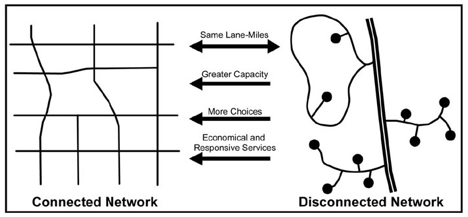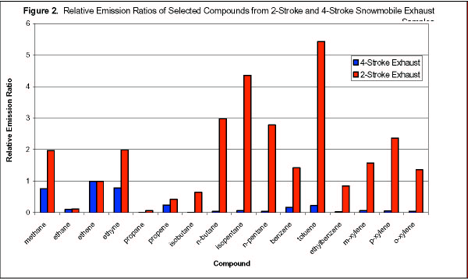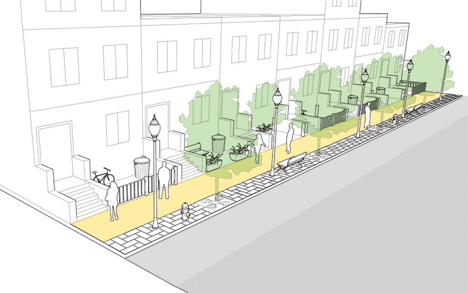Top 3
Cars and Trucks
Next time you buy a car, ask for an electric or low-emission vehicle.
Low emission vehicles, identified by smog ratings of 8 or higher, are available for sale in Utah. EPA Smog Ratings are available on window stickers of all new cars sold in Utah, which also contain information regarding fuel economy. These vehicles offer a number of innovations that substantially reduce the emissions from tailpipes. Increasing your smog rating by just a few points can reduce emissions by as much as 70%. Since our cars last longer and longer, a decision to buy a low emission vehicle can remove emissions from the air for 20+ years. Sometimes, a cleaner version of the same model is available if you ask for it.[i]

Resources
- Charging stations for electric cars are becoming more common. Look for nearby stations at https://www.plugshare.com/, Electric Highway installed 20 public EV charging stations in 2020 from Volkswagen settlement grant money
- Smog rating information and window stickers. http://www.deq.utah.gov/Topics/Air/smog/smog.htm
- Information on low-emission vehicles and technology http://www.jdpower.com/cars/articles/tips-advice/understanding-low-emission-vehicles
- Federal tax incentives for purchasing electric and hybrid vehicles. https://www.fueleconomy.gov/feg/taxcenter.shtml
- US Dept. of Energy/EPA Window Sticker for Smog Rating http://www.fueleconomy.gov/feg/Find.do?action=bt1
Purchase Only Tier 3 Fuel.
Tool: Purchase Only Tier 3 Fuel
Buy only Tier 3 fuels. Tier 3 fuel contains just 10 parts sulfur per million, compared to 20-30 parts per million (ppm) of sulfur in older Tier 2 fuel. Sulfur in fuel makes the emission control equipment in the car function poorly. Since Tier 3 fuel contains 2-3 times fewer sulfur particles compared to our fuel today, converting from our current fuel to Tier 3 is among the most highly leveraged and cost-effective air quality controls measures available.[ii] Tier 3 gas will reduce harmful emissions up to 80% in 2017 and newer cars, and up to 12% in older cars.
Resource
- EPA Regulatory Announcement on Tier 3 Gasoline Sulfur Standard’s Impact. http://www3.epa.gov/otaq/documents/tier3/420f14007.pdf
- Tier3gas.org shows you where you can buy Tier 3 fuel. https://www.tier3gas.org/
Work with city officials and employers to create communities that minimize the need for a car, and promote walking and biking.
Tool: Encourage acceptance of accessory units (basement apartments, over-garage apartments, etc.) that promote more efficient land use.
Allowing more dwelling units keeps people closer to their destinations, and postpones or avoids building housing on existing farmland that is distant from where people work, learn, worship, and play.[iii]

Resource
- Oregon Department of Environmental Quality video on Accessory Dwelling Units https://www.youtube.com/watch?v=tjkCG9oDrKM
Tool: Encourage zoning for organized, well-spaced, walkable commercial, civic, religious, and educational centers in existing and new areas.
Commercial nodes can be identified through a community’s master plan. Walkable districts usually have nodes between ¼ and ½ of a mile wide. Smaller commercial centers provide more bicycle and pedestrian access. Centers should also include schools, work places, churches, and civic centers.
Resource
- Information on community centers and benefits. http://yourutahyourfuture.org/strategies/cornerstone-one
Tool: Request end-of-trip facilities for bicyclists and pedestrians from your employer.
Commuters who bicycle or walk to walk can often arrive wet, muddy or sweaty. In order to make walking or cycling to work viable for many employees, showers and changing facilities (either on-site or close to work) are a necessary amenity. Moreover, long-term bicycle parking can be sparse. Work with your employers to provide these amenities where possible.
Resources
- LEED Requirements for Showers and Changing Facilities
Many LEED certifications including LEED BD+C, LEED ND, and LEED CI include requirements for showers and changing facilities.
http://www.usgbc.org/node/2614413?return=/credits/new-construction/v4
Case Studies
- Indy Bike Hub
The Indy Bike Hub is a partnership between the City of Indianapolis, the YMCA, and Bicycle Garage Indy (a local bike shop). Situated on the Indianapolis Cultural Trail, the Bike Hub provides an ideal location for downtown employees to shower, change and store their bicycles. Other amenities such as a full service bike shop and exercise gym are also present on-site. http://indybikehub.org/
Tool: Request better street connectivity in your neighborhood.
Streets that have more intersections and are more connected make it easier to walk and bike to your destinations. It shortens the distance between two points, makes it easier to navigate, and is more economically efficient. It also reduces the demand for busy “arterial” streets which collect the traffic from non-thru streets, creating impassable barriers to foot traffic and are frequently eye sores for the community.[iv]

Tool: Request connectivity of trails, bikeways and pedestrian facilities.
Connectivity is a key to making biking and walking convenient. Connectivity standards should include coordination among different departments to encourage connectivity between destinations. New development or redevelopment should provide designated bikeways. Street networks should be designed to ensure connectivity for pedestrians and cyclists.
Tool: Request lighting along streets, trails and public spaces to promote safety.
The use of appropriate lighting along sidewalks, crosswalks and public spaces creates a safer and more comfortable environment for cyclists and pedestrians. Pedestrian scale lighting promotes safety through traffic calming and illuminated bikeways while discouraging criminal activity. People are encouraged to bike and walk more when they feel safe, especially at night. Lighting requirements should also minimize light pollution.
Resources
- Seattle Pedestrian Lighting Citywide Plan
http://www.seattle.gov/transportation/pedestrian_masterplan/docs/PedLightingFINAL.pdf
Tool: Work with neighbors to provide a walking path through the end of cul-de-sacs.
Case Study
- Cul-de-sac neighbors put in a permanent short-cut, California. http://www.thefreelibrary.com/Cul-de-sac+neighbors+put+in+a+permanent+short-cut.-a06547789
Tool: Express support for walking and biking lanes, paths, and trails with your elected officials.
Ensure that city officials value these resources as much as you do. Hold them accountable for the desires of you and your neighborhoods by requesting access to information about trail, sidewalk, and bike lanes in Provo.
Tool: Speak with elected officials to establish a dedicated funding stream for active transportation projects (walking, biking, etc.).
Bicycling infrastructure in particular is not given specific funding in state projects. Work with city officials to establish a revenue stream to ensure these amenities are provided for your community.
Make a habit of walking, biking, and taking public transportation whenever possible.
Many longer daily commutes in cars could easily be replaced with public transportation, removing cars from the road and emissions from the air, and freeing up your commute time toward more valuable pursuits. Likewise, shorter commutes could be replaced with walking and biking.
Resources
- UTA Provo bus route map. http://www.rideuta.com/~/media/RideUTA/Maps/ProvoBusApril2015.ashx
- Provo City Bike Lanes and Trails Map. http://maps.provo.org/downloads/Trails_Map.pdf
Change the way you use your car.
In addition to driving less, we can use our cars more responsibly to limit emissions. This involves combining trips, idling less, and other behaviors that reduce the emissions footprint of our vehicles.
Tool: Carpool whenever possible.
Most vehicles travel with just a single occupant. By taking trips together with colleagues, neighbors, and family members, we collectively remove thousands of vehicles from the road, and emissions from the air.
Resources
- UCAIR’s home page with information on how carpooling can reduce emissions into the air. http://www.ucair.org/
- UTA Ridematching Database helps you identify people in your neighborhood with whom you could carpool.
https://www.utacommuter.com/uta/service.asp?Authenticated=False
Tool: Combine trips whenever you can.
Most of your car’s pollution happens in the first few minutes after you turn the car on, while the pollution control equipment is warming up. Once the car is warm, “chain” all your errands together. You can leave your car in a parking lot for up to an hour before the pollution control equipment cools off.
Tool: Avoid idling.
Locales such drive-thrus, schools, truck stops etc., can be particularly vulnerable to large concentrations of air pollution. Turning your ignition off would improve air quality locally and regionally due to the outsized impact of idling as a source of emissions when compared to running a vehicle in motion. If you are stopped for more than 10 seconds, it is more efficient to turn your engine off.
Tool: Work with your employers toward more flexibility for teleworking, compressed work week, and flex hours, particularly on poor air quality days.
Flextime refers to having a variable work schedule. Variability in the work schedule would enable commuters to drive during off-peak hours, reducing traffic congestion and its inefficiencies. Teleworking takes cars off the road altogether by permitting people to work from home. Public employees can take the lead in these initiatives.
Tool: Don’t use a power chip in your diesel truck.
If you have a diesel truck and have a power chip, turn it off when you’re driving around town, especially during inversions or other times when pollution is building. Your truck is designed to reduce emissions, and when you use a power chip the emissions dramatically increase, regardless of the effect on gas mileage. That black plume coming out of the tailpipe is as bad as it looks, and it’s likely illegal as well.
Tool: Avoid drive-up windows.
Instead, park and walk in. Drive-up windows encourage idling which causes pollution.
Work with your local teachers to instruct children on air quality and related healthy lifestyles.
Walking and biking is good for your air quality, but also good for your health. Work with educators to prioritize this in the classroom.
Tool: Start a “walking school bus” in your neighborhood.
A walking school bus is a great way to ensure safety for younger children, while facilitating a healthy, clean air activity by walking to school.
Resources
- How to start a walking school bus in your neighborhood. http://www.walkingschoolbus.org/
- UCAIR offers suggestions and tips on how to drive less on their site. http://www.ucair.org/at-home/
Tool: Partner schools with the Transportation Department to develop safe routes for children to bike and walk to and from school.
Work with the school and local government to develop bike lanes and sidewalks with monitored crosswalks on major pathways to schools. Ensure that schools are accessible, and sited in neighborhoods that encourage walkability, avoiding major arterials without sidewalks or services to comfortably accommodate pedestrians.

Resource
- American Public Health Association guide to health and transportation
http://www.saferoutespartnership.org/sites/default/files/pdf/The_Final_Active_Primer.pdf
Homes
Buy an ultra-low NOx water heater the next time yours needs to be replaced.
Ultra-low NOx water heaters emit up to 75% fewer emissions than their similar counterparts. Not to be confused with high efficiency water heaters, these typically cost only $75-80 more than their regular “Low-NOx” counterparts. Be sure to specify “Ultra-Low NOx.”
Improve your home’s energy efficiency, and reduce household emissions.
Upgrading your home to be more energy efficient could result in savings from 5% to 30% of your monthly energy bill, and reduce your home’s emissions.
Tool: Take a home energy audit.
A home energy audit seals your home and places fans in the doorway to measure how much air can pass through gaps in walls, windows, and doors. There is more you can do to check how energy efficient your home is. If your home is efficient, you will emit less and save money.
Resource
- o The Home Energy Rating System (HERS) index is the nationally recognized scoring system for measuring a home’s energy performance. The HERS Index Score can be described as a sort of miles-per-gallon (MPG) sticker for houses, giving prospective buyers and homeowners an insight as to how the home ranks in terms of energy efficiency. In addition to a HERS Index Score, a home energy rating also provides the homeowner with a detailed report regarding energy problems in the house.
https://www.resnet.us/hers-index - How to conduct a home energy audit to understand how you can save money by reducing energy waste.
http://www.homefinder.com/research/energy-efficient-homes-74id - Energy efficiency tips.
http://utahcleanenergy.org/how-to/energy-efficiency
Tool: Upgrade your home’s windows and doors.
Windows and doors account for 10% to 25% of heating and cooling loss from your home.
Resource
- US Energy Department Window Tips
http://energy.gov/energysaver/tips-windows - Energy efficiency tips:
http://utahcleanenergy.org/how-to/energy-efficiency
Tool: Upgrade your home’s insulation.
Improving the shell of your home is the fastest way to improve household energy efficiency. Adopting the latest standards in household energy efficiency can save you $300/year, and most homeowners in Utah will recoup these investments within 6 years.[v]
Resource
- Insulation upgrades and other energy efficiency tips: http://utahcleanenergy.org/how-to/energy-efficiency
Tool: Upgrade your home’s duct work.
Leaky ducts can leak air and transfer energy inefficiently. Make sure ducts are sealed and appropriately insulated.
Resource
- Energy efficiency tips: http://utahcleanenergy.org/how-to/energy-efficiency
Tool: Purchase high-efficiency appliances.
High efficiency appliances use less fuel or electricity, saving you money and removing emissions from the air we share.
Resource
- Energy efficiency tips: http://utahcleanenergy.org/how-to/energy-efficiency
Tool: Lower your water heater thermostat.
The hotter you heat your water, the more fuel is burned. Reduce your hot water temperature to the never heat water to a temperature above what you will use.
Tool: Use drapes and blinds.
Close drapes and blinds at night in the winter to reduce heat lost. Close them in the day during summer. Windows account for 10 to 20% of heating and cooling loss from your home. In the summer, open windows at night to cool off the house.
Tool: Replace all incandescent light bulbs.
Switching to LED bulbs will immediately start saving money and more than pay for itself over time. With the decreasing cost of LED bulbs, there is no reason to wait to switch.
Adjust your thermostat.
Tool: Lower your thermostat in the winter. Raise it in the summer.
If all Utahns lowered their thermostat in the winter by just one degree, we could remove 1% of all household emissions.
Resources
- o See how your daily activities impact air quality: http://www.ucair.org/
- Thermostat upgrades and other energy efficiency tips: http://utahcleanenergy.org/how-to/energy-efficiency
Tool: Talk to your coworkers and management about changing the office dress code.
Over-cooling an office in the summer and over-heating in the winter results in an unnecessary use of energy. Dressing appropriately in the winter and summer allows for reduced energy consumption and therefore cleaner air in our city.
Replace your lawn mower, weed whacker, and snow blower with electric models.
Two stroke engines on small motors found on everything from on-board motors for boats, to lawnmowers, leaf and snow blowers, burn an oil-gasoline mixture. This means they will always produce more hydrocarbons, carbon monoxide, and critically for Utah, more particulate than gas-only four-stroke engines.[vi] There are now affordable electric options for almost all of these motors (e.g. electric lawnmowers and leaf blowers).[vii]

Resources
- Utah DAQ CARROT Program offers discounts and exchanges for landscape equipment (utah.gov)
http://www.carrot.deq.utah.gov/
Replace your gas can.
Most gas cans people have in their garage present issues such as fuel spillage and allowing vapors that create smog to escape from the can, even when it is closed. New gas cans mitigate and eliminate many of these issues.
Resource
- UCAIR and Chevron gas can exchange program. http://www.ucair.org/hot_topics/ucair-chevron-gas-can-exchange/
Avoid burning wood on days when pollution is building.
One wood burning fireplace burning for an hour produces the same emissions at 90 SUVs running over that same hour. Eliminating this source during days when pollution is building can make a huge impact.
Resources
- See how your daily activities impact air quality: http://www.ucair.org/
- DEQ Resources for Wood Burning: http://www.deq.utah.gov/Topics/Air/woodburning/rules.htm
- Wood burning and air pollution report http://www.good4utah.com/news/local-utah-state-news-/wood-burning-and-air-pollution
Promote urban forestry and gardening.
Mature trees as well as smaller plants can not only offer energy savings with their shade, but also absorb emissions during the spring and summer.
Tool: Work with city officials to create walkable and bikeable green spaces that connect key destinations.
Creating streets and corridors where people are comfortable walking and biking is critical to get Provo residents out of their cars. Street trees, parks, and other green spaces can help people feel safe, secure, and comfortable walking down the street. By working with neighbors and with the city, you can encourage walking and beautify your neighborhood.[viii]

Tool: Plant shade trees around your home.
Shade trees help conserve energy, particularly in the summer months. They also absorb many of the harmful precursor gases to ozone and particulate pollution, particularly in the spring and summer when they are green.[ix] Plant trees on the south and west side of your house to shade your home in the summer. Deciduous trees will let sunshine into your windows to heat your house in the winter.
Resource
- Selecting the best shade trees: http://pubs.ext.vt.edu/426/426-610/426-610.html
- Provo City's tree selection guide: http://provopower.org/wp-content/uploads/2015/06/TreeBook2015-WEB.pdf
Tool: Start a neighborhood garden.
Growing your food locally eliminates shipping and the emissions associated with transport.
Resources
- Clemson University Community Gardening Guide:https://www.clemson.edu/extension/hgic/plants/vegetables/gardening/extension_community_gardening.pdf
- 10 Steps to Starting a Community Garden:
https://communitygarden.org/resources/10-steps-to-starting-a-community-garden/
Install solar panels.
Solar panels reduce your electric costs and power your home with clean, renewable energy. Rebates and tax credits can help you pay for them.
Resources
- See current solar installation rebates from the Utah Governor's Office of Energy Development: https://energy.utah.gov/tax-credits-financing/solar-tax-credits/
[i] EPA’s new Fuel Economy and Efficiency label. https://www3.epa.gov/carlabel/
[ii] EPA Sets Tier 3 Motor Vehicle Emission and Fuel Standards, http://www.epa.gov/otaq/documents/tier3/420f14009.pdf
[iii] Three examples of ADU from the city of Minneapolis. http://www.startribune.com/right-to-build-accessory-dwelling-heads-to-minneapolis-council/282303781/
[iv] From Lehigh Valley Planning Commission
[v] https://www.energycodes.gov/sites/default/files/documents/MeasuringStateCompliance.pdf
[vi] http://www.ncbi.nlm.nih.gov/pmc/articles/PMC1247506/
[vii] Diagram of the compounds emitted by 2-stroke engines compared to 4-stroke engines in snowmobiles. http://serc.carleton.edu/research_education/yellowstone/snowmobiles.html
[viii] From NACTO Street Design Guide. http://nacto.org/publication/urban-street-design-guide/street-design-elements/sidewalks/



